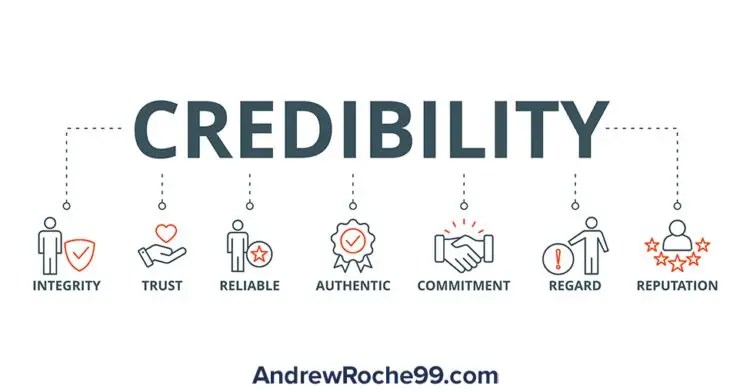A backlink – also known as inbound or external links – is a link on one website that points to another. Search engines such as Google or Bing view backlinks as signals of quality content since other websites support it by linking to it. Pages with more backlinks can rank higher on the SERPs. This article will explore the world of backlinks and how you can build your backlink profile.
The Value of Strong Backlink Profile and Your SEO Strategy
Do backlinks impact your SEO rankings?
Yes – 100%, yes.
Backlinks are an essential element of SEO. Developing authoritative backlinks is among the most valuable signals that Google takes into account when it ranks content, so you need to build a strong backlink profile.
So – what makes a high-quality backlink?
Trust is one of the biggest factors. If a respected website links to your site, that’s a huge vote of confidence.
If you only have spammy websites linking back to your site, it’s not going to help your efforts much.

Popularity is another factor you need to consider. Since Google considers external links as votes of popularity for a website or webpage, there is a strong correlation, but no causation, between sites with an impressive backlink profile and higher rankings.
Any link from another site is technically a backlink. However, as we’ve touched on, not all backlinks are created equal.
Think about it – most people would trust a recommendation from a close friend over one from a total stranger. The same concept applies in the world of Google and backlinks.
This trust factor comes in the form of PageRank, one of Google’s algorithms that evaluates a page’s backlink profile. This assessment determines the overall importance and authority of a page.
If you earn backlinks from quality websites within your industry, Google will likely gobble this up and rank your content high on the SERPs since it views your site as an authority in your industry.
Types of Backlinks
As we’ve already mentioned, not all backlinks are the same. Let’s take a look at the different types of backlinks that make up your backlink profile.
Nofollow Links

We’ve already discussed how links are like votes for trusted resources. However, what if you don’t want to vouch for a website but still need to link to it?
This is when you would use the nofollow (rel=”nofollow”) attribute to let Google know that they shouldn’t pass trust (PageRank).
Nofollow links won’t help you rank higher on the SERPs in most cases since they don’t pass PageRank. However, Google announced that they were evolving nofollow links in September 2019.
When Google first introduced nofollow, it wouldn’t count any link marked this way as a signal to use within its algorithms.
This is no longer the case.
All the link attributes are processed as hints about which links to consider or exclude within Google search.
Some camps believe that this change to nofollow links means that Google will pass trust through nofollow links in certain cases, such as when an authority news platform adds the attribute across their entire site.
Follow Links
Unlike a nofollow link, a follow link does pass along trust (PageRank). All links are technically follow links unless you add the nofollow attribute.
Sponsored or Paid Links

There are certain situations where you might pay an affiliate or an influencer to promote your content or to share a review of one of your products.
If money (or a product or service) changes hands in return for a link, you need to add a rel=”sponsored” attribute to let Google know what’s going on.
The rel=”sponsored” prevents any sort of negative impact your site might experience from these links. That being said, if you’re working with an affiliate, you should definitely use the sponsored attribute for these backlinks.
User-Generated Content (UGC) Links
UCG links come from likes on forums and blog comments. This attribute lets Google know that a user, not the webmaster, added the link.
Toxic Links (Unnatural Links)

The wrong links can damage your website’s ability to rank or negatively impact any rankings you currently own. “Bad” links are often referred to as toxic or unnatural links.
Toxic backlinks, which usually originate from low-quality or sketchy websites, directly violate Google’s Webmaster Guidelines. These links exist for one reason, to try and manipulate search engine rankings.
Toxic links can come in the form of paid links without a nofollow or sponsored attributes. Toxic links can also come from low-quality directories or bookmark sites, or an unnatural number of links that use the exact match anchor text.
Editorially Placed Links
Editorial links are links that you didn’t ask for. Sometimes, a website will naturally link to a site as a resource to support its content. Google highly values these links because they are meant to enhance a user’s experience, not manipulate the search engines.
Why are Backlinks Important?

When it comes to SEO, backlinks are a hot topic of discussion and are the focus of just about every site owner. But why are backlinks so important? The rest of this article will focus on a few of the reasons why you should care about backlinks that bring users to your site.
Backlinks Can Improve Rankings
If you don’t have great backlinks pointing to your site, you miss out on one factor that goes into understanding a website – its trustworthiness. A healthy backlink profile highlights that you are a trusted authority in your industry and that you deserve to rank at the top for the key search terms.
Google Discovers New Pages via Backlinks
Google’s spiders (aka Googlebot) rely on backlinks to find new pages on the web. This is one of the primary ways Google discovers new content, crawls it, and indexes it.
One way to think of links is how Google navigates the complex world of the internet. A link from a trusted source will help your content get indexed faster by Google.
Backlinks Increase Your Trustworthiness and Credibility

High-quality links from authoritative and trusted sources help your content rank higher. They also help boost your trustworthiness and credibility as a business.
Think about it like this: let’s say you’re a lacrosse equipment startup. There’s a good chance that few people know about your business (yet).
If you can land some press coverage and a link from Lax.com, you will gain a credibility boost from that link.
If you continue gaining links from reliable sources such as USA Lacrosse, Lax Unlimited, and StringKing, then you will gain more credibility and trustworthiness.
Besides being good for your site’s SEO, having journalists and editors at major publications in your industry who chose to link to you also goes a long way to show that people are talking about your business.
Backlinks Send Referral Traffic to Your Website

Way back in the day when the web first went live, links were purely navigational. In the simplest form, the purpose of links was to take web browsers from one page to another, not just within one website, but also between different websites.
Today, links are a primary factor in Google’s algorithm. However, the general principle has remained the same: great links send valuable traffic to your website.
If we take a step back to the lacrosse example, relevant press coverage can send interested users to your site. This introduces your brand to new audiences who you can then convert into customers.
How to Check a Website’s Backlink Profile
Checking other websites for backlinks is helpful whether you’re crafting a link-building campaign or benchmarking your site against your competition.
You can gain insights about your site’s backlink profile from tools such as Google Search Console, but you need more specific information about other websites’ backlink profiles. I’m personally a big fan of Neil Patel’s Ubersuggest SEO tool for this task.
How to Use Google Search Console to Understand Your Backlink Profile
Google Search Console provides insight into what your backlink profile looks like. However, it doesn’t provide any information about your competition.
To get started, head over to Google Search Console and log in. Towards the bottom of the left-hand menu, you find Links. Click it.
You should then see an overview of your site’s backlink profile under the “External Links” heading.
This section provides insights into:
- External Links: How many external links point to your site
- Top Linked Pages: The pages on your site with the most backlinks pointing to them
- Top Linking Sites: The website that link to your site the most
- Top Linking Text: The most common anchor link text used for external links
You can even export your site’s external links as a CSV file in the top right corner.
How to Build Your Backlink Profile

From the skyscraper method to crafting a sturdy digital PR campaign, there are numerous ways to maximize your link-building efforts.
Ask Your Partners to Link to Your Site
While you should avoid link-building schemes at all costs, it’s okay to reach out to a partner you actively work with without having to worry about any repercussions. This can be an easy win, especially if they already mention you on their website.
Since you already have a relationship with your partners, it’s less random and will likely yield better results than reaching out to site owners you don’t know.
Use HARO to Respond to Requests from Journalists
Most major media outlets use HARO to find quotes and information about various niches. HARO is a relatively low-effort way to acquire backlinks, as the sources are actively looking for an expert to reference.
Write (Selective) Guest Posts

Writing guest posts can be beneficial. However, you need to make sure that the partnership makes sense and that your content is useful. If not, your guest post can come across as spammy.
Here are a few do’s and don’ts to follow if you want to try your hand at guest posting:
Dos
- Find a site relevant to your niche
- Ensure posts are about unique topics
- Include case studies and original data
Don’ts
- Send the same guest post to multiple sites
- Stuff links to your site in the post
- Accept random guest post requests just to get backlinks
Use Niche-Specific Directories
Adding your business to niche-specific directories – or citation building – is a useful local SEO technique that can also help build your backlink profile.
Turn Brand Mentions into Links
If a site organically mentions your site, they will likely be open to linking to you as well.
Create Informational Content to Build Your Backlink Profile

Publishing ebooks, case studies, or original research is a great way to build your backlink profile. Whatever you do, make sure you back up your content with data so that your content is a respected resource.
Publish Groundbreaking Research and Pitch It to the Press
This technique is similar to generating informational content. However, you need to take the next step and pitch your research to specific publications. You can use tools such as HARO, or PR software such as Prowly.
Prowly’s pitching tool suggests options based on your press release, provides contacts within its database and allows you to import your personal contact list.
Closing Thoughts
Building your backlink profile isn’t an easy task. However, backlinks are an essential aspect of Google’s algorithm when ranking content. You need to earn backlinks from authoritative and relevant sites to build your backlink profile.
Now that you’re more informed about backlinks, you’re prepared to start working on building an excellent backlink profile for your site. Make sure to keep an eye out for what your competitors are doing and jump into new opportunities as quickly as possible.





